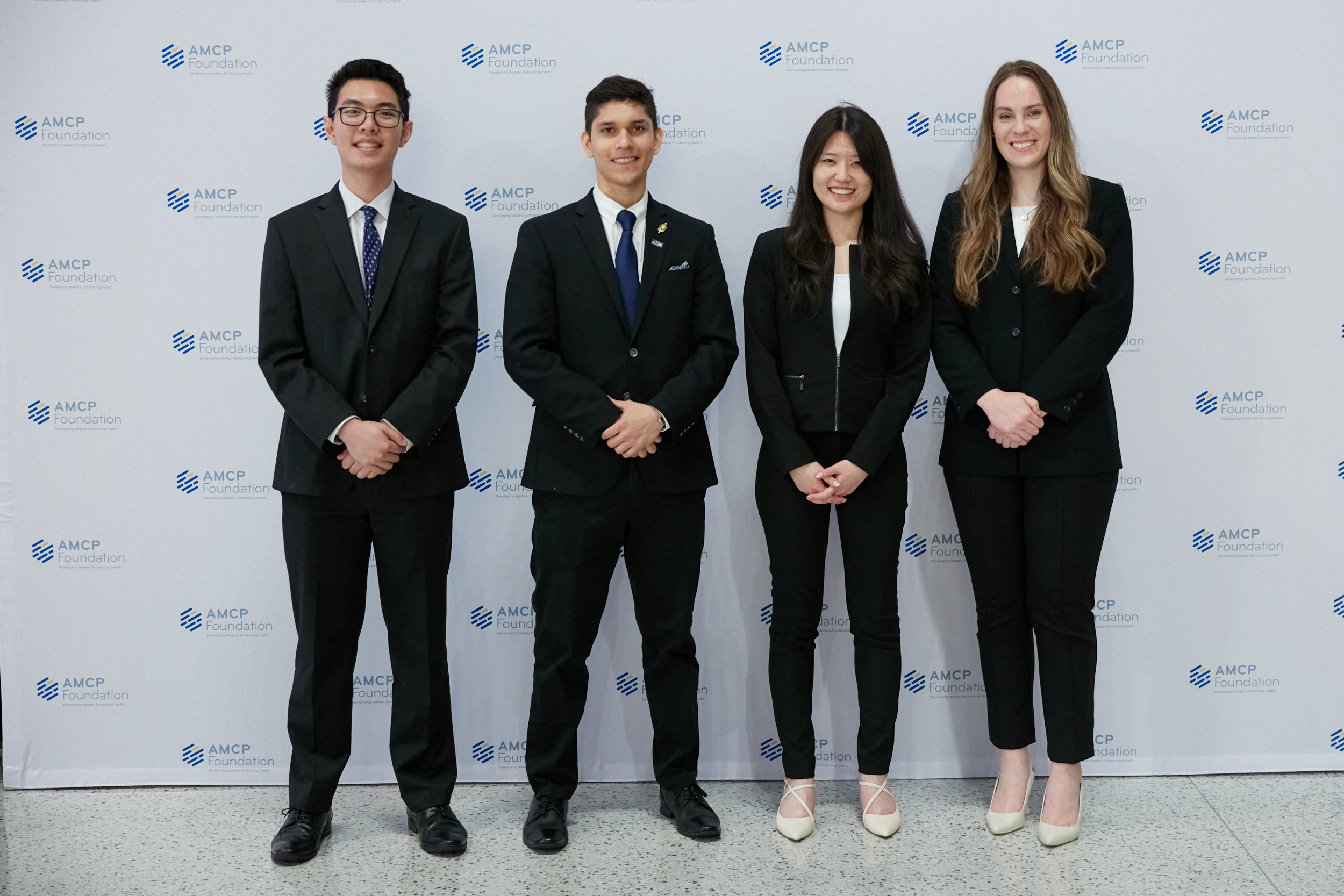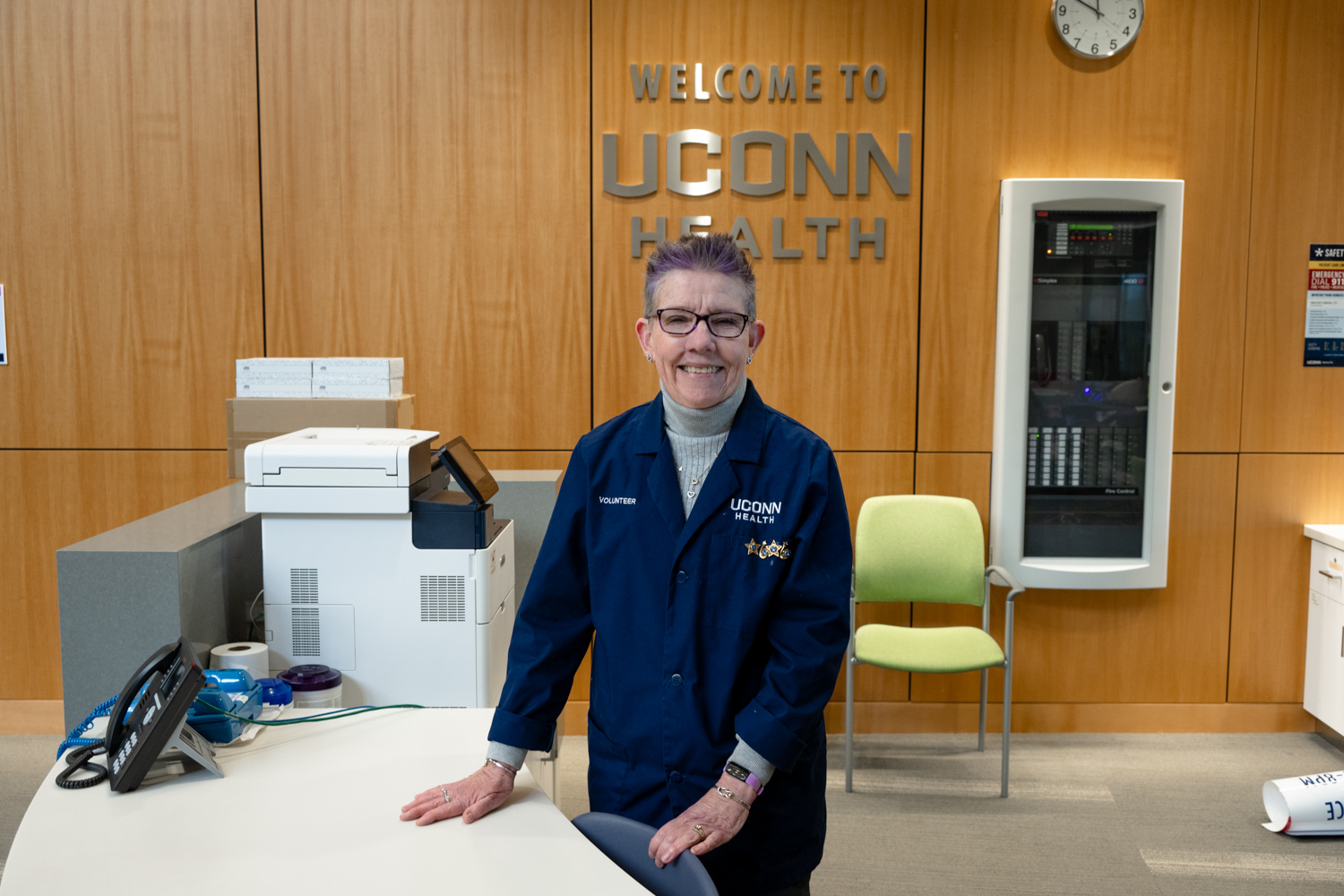The first graduating class from the fledgling agricultural school for boys that eventually became the University of Connecticut had six members. In 1883, the first six students at Storrs Agricultural School received their graduation certificates, after completing the two-year program, and some then went on to finish high school.
Since then, tens of thousands of students have received their diplomas from the University, in ceremonies that both honor their academic achievements and launch them into the next phase of their lives.
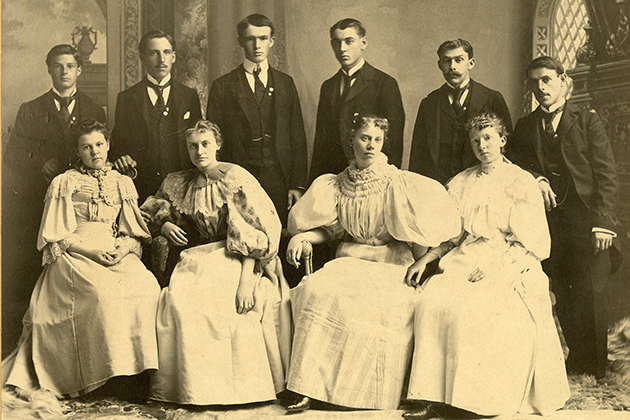
For the first 10 years, a certificate was awarded, rather than a degree; and until the 1920s, when the first master’s degrees were awarded, the college offered undergraduate degrees only.
In 1893, the school became officially known as Storrs Agricultural College, under a legislative act that also formally allowed the admission of women. The first three women to graduate from the college received their diplomas the very next year, since they had requested and been allowed to take classes starting in 1891.
At the earliest commencement ceremonies, men wore suits and women wore dresses that were sometimes hand-sewn. The first time that graduates wore caps and gowns was in 1907.
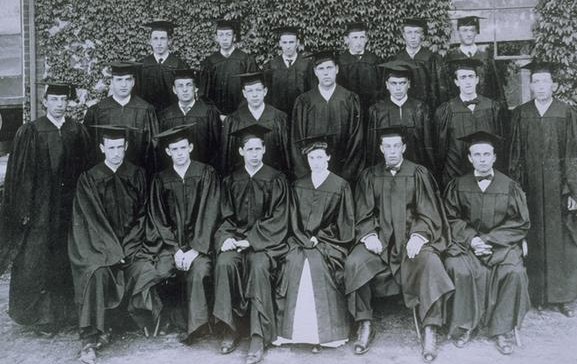
In the early days of the college, there were three terms per year, with the spring term ending in June. From the beginning, commencement ceremonies were held in June, except for those held in 1918, 1942, and 1943, which were held in May. The two-semester year was introduced in 1914, but it was not until 1973 that the tradition of May commencement became established.
For about 70 years, the University held a single ceremony to award degrees to students in all schools and colleges. In 1950, the first dual ceremony for undergraduates was held, due to the increasing size of the graduating class.
In 1967, the first graduate degree ceremony separate from the baccalaureate ceremony took place in Jorgensen Auditorium for degree recipients from the Graduate School and the School of Law. The first ceremony to include graduates of the medical and dental schools was held in 1972, in Jorgensen Auditorium, and the first separate ceremony for the School of Law was held the next year.
Until 1980, all graduation ceremonies were held in Storrs, including those for the law, medical, and dental schools. After Gampel Pavilion opened in 1990, the ceremonies were moved there from Jorgensen.
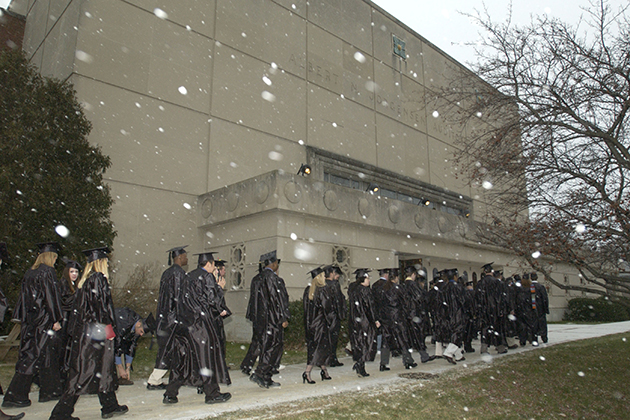
As enrollment continued to rise in the early 21st century, the University began offering multiple graduation ceremonies to ease crowding in Gampel Pavilion. A mid-year ceremony was first held in December 2003, complementing the traditional May commencement: that year, 650 seniors marched to the renamed Jorgensen Center for the Performing Arts in the snow. But just four years later, when a snow and ice storm created hazardous conditions along the East Coast, the ceremony had to be canceled; and the following February, then-President Michael Hogan announced that the University would no long offer winter commencement exercises, citing high costs as well as unpredictable weather. Since then, all mid-term graduates have been invited to the May commencement.
The first three schools to hold their own commencement event in May were pharmacy, education, and fine arts, in 2007. By holding separate ceremonies, school administrators hoped to personalize the event for graduates, and host a nationally recognized speaker in their particular field. One of the three schools, Pharmacy, had begun holding a hooding ceremony in Rome Ballroom prior to commencement in 2003; in 2007, distribution of diplomas was added to the hooding of the students. The three-school experiment was deemed a success, and in 2008, each school or college began holding its own individual commencement ceremony.
Sources: History of Commencement, researched and compiled by Mark J. Roy; articles from the UConn Advance, Sept. 5, 1997, Sept. 14, 1998, Jan. 20, 2004, Feb. 5, 2007, Dec. 8, 2008; and materials in the University Archives.
Read more stories related to Commencement.

